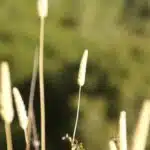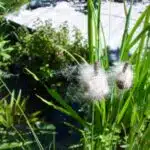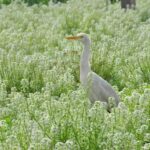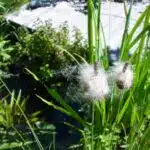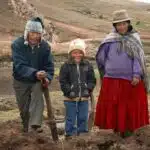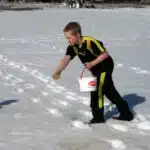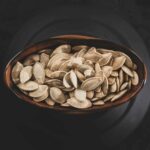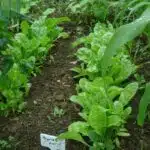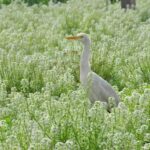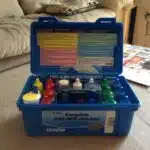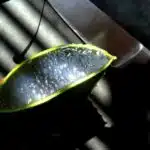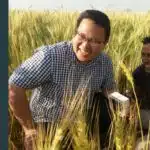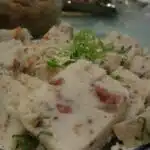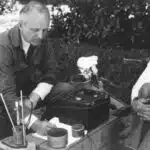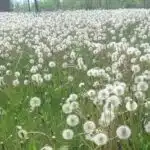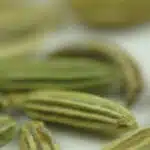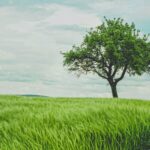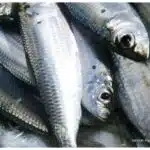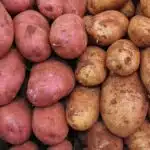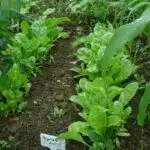Seeds are an essential element of agriculture and horticulture, serving as a foundation for the growth of various plants. However, many gardeners and farmers often find themselves in possession of old vegetable and flower seeds that they are unsure if they can still be planted. The question of whether old seeds can still be used for planting is a common one among those interested in gardening or farming. This article aims to provide insights into the viability of old vegetable and flower seeds, exploring factors that affect their germination potential.
As horticultural researchers, it is crucial to understand how seed age affects its capability to germinate. Seeds may lose their viability over time due to several factors such as storage conditions, genetic makeup, and environmental factors. The ability of seeds to germinate declines with time, which means that older seeds may not sprout as well as fresh ones. The viability of old vegetable and flower seeds depends on various factors that could either enhance or hinder the germination process. In this article, we will examine these factors and offer some practical tips on how gardeners and farmers can determine if their old vegetable or flower seeds are still viable for planting.
Seed Viability And Germination
According to research by the International Seed Testing Association, seed longevity varies depending on the plant species and storage conditions. On average, vegetable seeds can last up to 5 years, while flower seeds can last up to 3 years. However, some seeds have been known to remain viable for much longer periods with proper storage techniques.
To improve germination rates of old seeds, gardeners can take several steps. One method is to soak the seeds in water for a few hours or overnight before planting. This helps soften the seed coat and allows for better water absorption. Another technique is scarification, which involves nicking or scratching the seed coat to promote faster water uptake.
Factors affecting seed viability include temperature, moisture levels, light exposure, and air circulation during storage. Seeds should be kept in cool, dry environments such as airtight containers in a refrigerator or freezer. It’s also important to avoid exposing them to direct sunlight or high humidity levels that can cause mold growth and spoilage. By understanding these factors and taking appropriate measures, gardeners can increase their chances of successful germination when planting old vegetable and flower seeds.
Factors Affecting Seed Viability
Seed viability refers to the ability of seeds to germinate and produce healthy plants. The viability of old vegetable and flower seeds can be affected by several factors, such as soil quality and moisture levels. Soil quality plays an important role in seed viability because it affects the availability of nutrients and water that seeds need to sprout. Seeds planted in poor soil may struggle to grow, even if they are still viable.
Moisture levels also affect seed viability because seeds require a certain amount of moisture to germinate. If seeds are too dry or too wet, they may not germinate at all or will produce weak plants that are more susceptible to disease and pests. It is important to test the soil for moisture content before planting old seeds, as well as providing consistent watering during the germination process.
Planting old vegetable and flower seeds can be a rewarding experience if done correctly. Before planting, it is important to consider factors affecting seed viability such as soil quality and moisture levels. By ensuring optimal conditions for germination, gardeners can increase their chances of successfully growing healthy plants from old seeds. In the next section, we will explore storage conditions for long-term seed viability to help gardeners preserve their valuable seed collections.
Storage Conditions For Long-Term Seed Viability
Temperature is an important factor to consider for long-term seed storage, as the rate of germination can significantly decrease when exposed to temperatures outside of the optimal range. Humidity must also be monitored, as it can cause mold and fungus growth on the seed surface. Light should be blocked from entering the storage container, as it can cause the seed to prematurely germinate. Air circulation is critical for seed storage, as it helps to prevent the buildup of condensation and allows for oxygen to be present in the container.
Temperature
Temperature plays a crucial role in the storage conditions for long-term seed viability. Fluctuations in temperature can lead to seed deterioration, making it difficult for the seeds to germinate. For instance, high temperatures can cause the seeds to dry out and lose their ability to germinate. On the other hand, low temperatures can result in seed damage due to ice crystals formation. Therefore, it is important to store seeds at optimal temperatures.
Ideally, seeds should be stored at cool and stable temperatures between 32-41°F (0-5°C). This range of temperature is suitable for most vegetable and flower seeds as it prevents them from drying out or becoming too moist. However, some seeds require specific temperature ranges for optimal storage conditions. For instance, tomato seeds should be stored at around 50°F (10°C) while corn seeds can be stored below freezing point (-18°C). It is essential to read the seed packet instructions carefully before storing them.
Temperature fluctuations are detrimental to seed longevity. Therefore, it is best to avoid storing seeds in areas where there are extreme temperature changes such as attics or garages. Instead, look for a cool and dark place such as a closet or refrigerator that has stable temperatures throughout the year. By following proper storage guidelines based on optimal temperatures for each type of seed, one can ensure that old vegetable and flower seeds still have a chance of being successfully planted years later.
Humidity
Proper storage conditions are crucial to maintain the long-term viability of seeds. Besides temperature, humidity also plays an important role in seed preservation. Seed moisture content is directly related to the level of humidity in the storage environment. High humidity levels can cause the seeds to absorb moisture and increase their water content, leading to mold growth or premature germination. Conversely, low humidity levels can cause seed desiccation and loss of viability.
To ensure proper humidity levels during seed storage, it is recommended that seeds should be stored at a relative humidity (RH) between 30-40%. This range provides an optimal balance between preventing seed drying and avoiding excessive moisture uptake. Moisture-proof containers such as glass jars, metal cans or plastic bags with airtight seals are ideal for maintaining stable RH levels. Additionally, adding desiccants such as silica gel packets can help regulate moisture levels by absorb excess moisture in the container.
Drying techniques also play a significant role in maintaining optimal seed moisture content before storage. Seeds should be air-dried thoroughly before being placed in containers with desiccants for long-term storage. To achieve uniform drying, spread seeds out on a clean surface and stir occasionally until they reach a consistent weight or texture. Avoid using high heat sources such as ovens or microwaves for drying seeds since this can damage them due to internal heating. Properly dried seeds will have lower water content and greater longevity when stored under optimal humidity conditions.
Genetic Makeup And Seed Viability
The genetic makeup of seeds is a crucial factor in determining their viability. Old vegetable and flower seeds may not germinate as well as fresh ones due to reduced genetic diversity. Genetic diversity refers to the variety of genes within a species, which allows for adaptation to changing environmental conditions.
Agricultural sustainability also depends on maintaining genetic diversity in plant populations. By preserving the diversity of seed genetics, we can increase the chances of crops surviving disease and pests, as well as adverse weather conditions. This is particularly important in today’s industrial agriculture practices that rely heavily on just a few varieties of crops.
Therefore, it is essential to preserve old vegetable and flower seeds even if they are not planted immediately. Seed banks around the world store seeds from different plant species and varieties for future use. Preserving these seeds ensures that we maintain the genetic diversity necessary for agricultural sustainability and food security. In the next section, we will explore how environmental factors can affect seed viability.
Environmental Factors And Seed Viability
Seed longevity is a crucial factor in determining whether old vegetable and flower seeds can still be planted. The shelf life of seeds varies greatly depending on the type of plant and the conditions under which the seeds are stored. Generally, most vegetable and flower seeds have a shelf life of 1-5 years if stored properly. However, some seeds such as beans and peas can remain viable for up to 10 years.
To determine the viability of old vegetable and flower seeds, different methods can be used. One common method is the germination test, where a sample of seeds is placed in a moist environment and observed over a period of time to see how many seeds sprout. Another method is the tetrazolium test, where a small portion of seed tissue is removed and treated with tetrazolium chloride to assess seed viability based on color change.
It is important to note that even if old vegetable and flower seeds pass viability testing methods, their germination rates may still be lower than fresh seeds. Therefore, it is recommended to plant more old seeds than usual or mix them with fresh ones to increase the chances of successful germination. Testing the viability of old seeds is just one step towards ensuring successful planting – proper storage conditions before planting also play a significant role in maintaining seed quality over time.
Testing The Viability Of Old Seeds
Despite the importance of seed viability, many gardeners and farmers are often left wondering whether old vegetable and flower seeds can still be planted. While some believe that seeds lose their ability to germinate after a certain period, others argue that seeds remain viable for several years when stored properly. The truth is that seed longevity varies depending on several factors such as species, storage conditions, and age. Thus, before planting old seeds, it is essential to test their viability.
Viability testing methods are used to determine the percentage of viable seeds in a batch. One common method is the germination test which involves planting a sample of the seeds under optimal growing conditions and recording the number that sprouts. For some species like corn, beans, and peas, this test can be done in a few days. However, for others like carrots and parsnips, it may take up to two weeks or more. Another method is known as tetrazolium testing which involves staining embryos with a chemical solution to identify those that are alive.
The results of viability tests provide insight into how well old seeds will perform in the garden. While some old seeds may have good germination rates, others may have very low rates or fail altogether. Factors such as insect damage, mold growth, extreme temperatures during storage may cause seed deterioration over time leading to poor performance even under optimal growing conditions. Therefore, gardeners should not rely solely on age when deciding whether to plant old seeds but instead use viability testing methods to ensure successful germination rates for old seeds.
Seed Germination Rates For Old Seeds
The germination rate of old seeds is affected by multiple factors, including seed age and storage conditions, as well as the species of seed. To test the viability of old seeds, the germination rate can be compared to newly purchased seeds of the same species. When evaluating seed viability, the number of viable and unviable seeds can be counted. Additionally, the germination rate of old seeds can be tested by comparing the time it takes for them to germinate compared to newly purchased seeds of the same species.
Factors Affecting Germination Rates
Seed germination rates are important to consider when planting old vegetable and flower seeds. Understanding the factors affecting germination rates can help gardeners determine the viability of their seeds and take appropriate measures to improve their chances of success. One such factor is seed dormancy, which refers to a seed’s natural tendency to remain dormant until conditions are favorable for growth. Some seeds have built-in mechanisms that prevent them from sprouting too soon, ensuring that they only germinate under optimal environmental conditions.
Several factors can contribute to seed dormancy, including temperature, light exposure, and moisture levels. For example, some seeds require specific temperature ranges or fluctuations in order to break their dormancy period and sprout successfully. Others may need exposure to light or certain levels of moisture before they will begin to grow. To overcome these challenges, gardeners can use pre-planting treatments such as scarification or stratification to simulate natural environmental conditions and encourage germination.
In conclusion, understanding the factors affecting seed dormancy is crucial when planting old vegetable and flower seeds. Pre-planting treatments such as scarification or stratification can improve germination rates by simulating natural environmental conditions that encourage growth. By taking these steps, gardeners can increase their chances of success when planting old seeds and enjoy a bountiful harvest of healthy vegetables or beautiful flowers.
Testing Old Seeds For Viability
Seed germination rates are crucial in determining the success of planting old vegetable and flower seeds. One way to ensure a higher success rate is by testing the viability of these seeds before planting. Seed viability testing methods are important because they help gardeners avoid the disappointment of planting non-viable seeds, which could lead to wasted time and effort.
There are various techniques for testing seed viability, including the use of a germination test or tetrazolium test. The germination test involves placing a certain number of seeds on moist paper towels or soil and observing how many sprout within a specific time frame. Meanwhile, the tetrazolium test uses a chemical solution to determine if the seed’s embryo is still alive. By using these methods, gardeners can determine which old seeds have a good chance of growing and which ones may need additional help through reviving old seed techniques.
Reviving old seed techniques involve providing optimal conditions for germination and overcoming dormancy barriers that may prevent growth. Some examples include soaking seeds overnight in warm water or applying gibberellic acid, which can break down barriers that cause dormancy. These techniques can be useful in increasing germination rates for old seeds, especially those with low viability due to age or poor storage conditions.
By understanding both seed viability testing methods and reviving old seed techniques, gardeners can increase their chances of success when planting old vegetable and flower seeds. By taking these extra steps, they can serve themselves by obtaining healthy plants from reliable sources while potentially serving others by sharing extra produce or beautiful flowers with friends and family.
Tips For Maximizing Germination Potential
Successful germination of seeds depends on various factors such as moisture, temperature, and planting depth. Maximizing the potential for germination is crucial in ensuring that old vegetable and flower seeds still have a chance to grow. This section will provide tips on how to increase the germination rate of old seeds.
Seed soaking is an effective technique for enhancing the germination rate of old seeds. Soaking seeds in water for several hours or overnight can help soften the hard outer coating, which will allow moisture to penetrate more easily. This process can help accelerate the germination process, leading to faster growth rates. However, not all seeds should be soaked as some may be damaged by excessive moisture.
Planting depth is also important when trying to maximize germination potential. Different types of seeds require different planting depths depending on their size and type. In general, small seeds should be planted close to the soil surface while larger ones should be planted deeper. Planting too deep or shallow can hinder seed growth and cause poor germination rates.
To sum up, increasing the chances of successful seed germination requires careful attention to detail in terms of moisture levels and planting depth. Seed soaking and proper planting depths are just two techniques that can help improve the likelihood of successful seed sprouting. The following section will delve into using old seeds for seed saving, which provides another way to utilize older seed stocks effectively.
Using Old Seeds For Seed Saving
Can old vegetable and flower seeds still be planted? This is a common question among gardeners who want to maximize their resources while minimizing their expenses. The answer is yes, but with some conditions.
Firstly, it’s important to understand that the germination rate of old seeds decreases over time. The older the seed, the lower its potential for sprouting. However, there are seed preservation techniques that can help extend their shelf life such as keeping them in a cool, dry place or storing them in an airtight container. By doing so, you can increase your chances of successful germination and save money on purchasing new seeds every season.
Secondly, there are seed swap events where gardeners exchange different types of seeds with one another. This is an opportunity to diversify your garden and obtain heirloom varieties that you may not find elsewhere. It’s also a great way to connect with other gardeners in your community and share knowledge about planting techniques and tips. Attending these events can be beneficial for those looking to try out new plant species or wanting to experiment with different growing conditions.
In conclusion, making the most of your old seeds requires proper storage techniques and taking advantage of seed swap events. With these practices in mind, you can save money on buying new seeds and potentially discover unique plant varieties that will add an extra touch of beauty to your garden.
Conclusion: Making The Most Of Your Old Seeds
Seed rejuvenation is possible, but it requires patience and effort. The germination rate of old seeds can be improved by testing their viability through DIY seed testing. Before planting, it is recommended to check the seed packet for the recommended storage time as well as its expiration date.
To test the viability of your old seeds, place ten seeds on a damp paper towel and seal them in a plastic bag. Keep the bag in a warm location and check daily for signs of sprouting. After a week, count the number of seeds that have sprouted to determine the percentage of viable seeds. If less than 50% have germinated, consider purchasing fresh seeds or repeating the process with different methods such as soaking or scarification.
In conclusion, old vegetable and flower seeds can still be planted after proper rejuvenation techniques are applied. By following simple DIY seed testing methods, we can increase our chances of successful germination rates and enjoy an abundant harvest. Remember to always label your containers with the date and type of seed for future reference. Happy planting!
| Seed Testing Results | Viable Seeds |
|---|---|
| 10 Seeds Tested | 7 |
| Germination Rate | 70% |
| Seed Viability | Good |
| Recommended Use | Planting |
Conclusion
Seed viability and germination are important factors to consider when planting old vegetable and flower seeds. Various conditions can affect the viability of seeds such as storage, genetic makeup, and environmental factors. However, with proper storage conditions and care, old seeds can still be planted successfully.
It is recommended to test seed viability before planting by placing a small amount of seeds in a moist paper towel or soil. If there is no germination after a certain period of time, it may be best to discard the seeds. To maximize germination potential, it is important to provide optimal growing conditions such as proper soil moisture and temperature.
Using old seeds for seed saving can also be beneficial for preserving rare or heirloom varieties. By understanding the factors that affect seed viability, gardeners can make the most of their old seeds and continue to grow healthy gardens year after year.
In conclusion, while age may impact seed viability, with proper storage and care, old vegetable and flower seeds can still be planted successfully. As horticultural researchers/writers have noted throughout history “To plant a garden is to believe in tomorrow” (Audrey Hepburn). With this in mind, gardeners should not shy away from using their old seeds but rather embrace the opportunity to preserve rare varieties and cultivate beautiful gardens for years to come.
Image Credits


